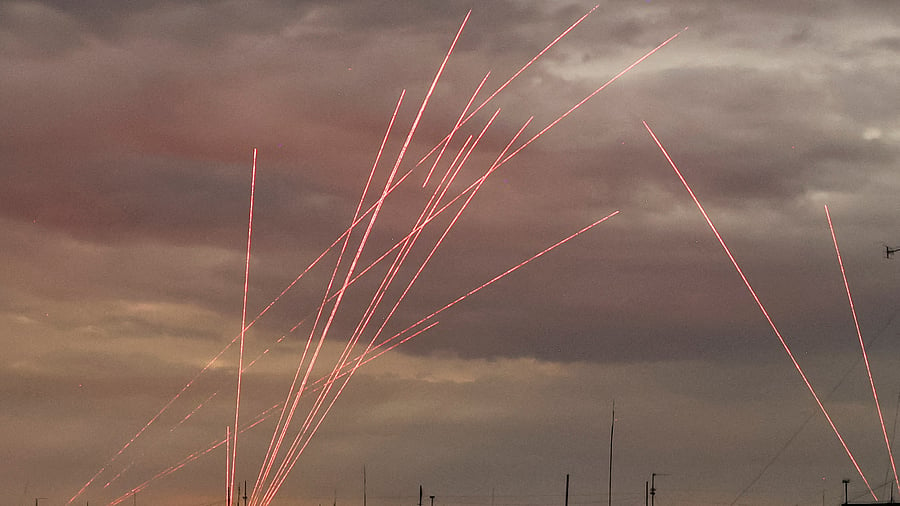
Paths of bullets are seen during a Russian drone strike, amid Russia's attack on Ukraine, in Kherson, Ukraine July 26, 2024.
Credit: Reuters File Photo
Drones have taken centre stage in the ongoing conflict between Russia and Ukraine, so much so that the ubiquity of drones over the Ukrainian skies have led to drone operators stumbling on to enemy drone feeds.
The conflict has seen large-scale use of drones by both sides, including cheap, commercial ones fitted with explosives as well as military-grade ones.
Ukraine, for the most part, has been switching to drones, for ground, air, and sea combat, to level the playing field against Russia's superior military strength.
However, according to a report by Business Insider, the large-scale use of drones have created some unforeseen circumstances, most notably, feed switching.
Feed switching works somewhat akin to radios: imagine driving a car, with your radio set to a certain frequency. At certain locations, you may find your car switching stations, if two stations happen to use the same frequency.
Drone feed switching works in a similar way and has been previously observed in civilian life—when electromagnetic spectrum gets full and crowded due to the presence of enough drones in that area, drone feeds may switch between operators. While it is possible to switch feeds intentionally, most feed switches are unintentional, experts told Business Insider.
What is novel is that it is now being seen in the Russia-Ukraine conflict as well, and the randomness can be both an opportunity or a threat.
In the ongoing conflict, neither Russia nor Ukraine has attempted to dominate the electromagnetic spectrum via electronic warfare, thereby exposing both sides to drone feed switches.
Simply put, with drone feeds switching unintentionally, sometimes Ukraine, and at other times Russia is getting intelligence that it did not plan on collecting.
In real-life scenarios, these may translate into a Ukrainian drone operator stumbling upon footage of Russian preparations for an attack, thereby giving time for Ukrainian defences to prepare for an assault they would otherwise have been completely unaware of. Similarly, Russia, too, is likely getting bits and pieces of intel it did not plan on collecting.
What makes the situation even more complicated is the fact that there is no way to monitor whether an enemy has access to a feed, at least at the present.
However, with drone feed switching becoming a common occurrence, there are questions about whether this unintentional phenomenon could be developed further to say...deliberately hijack a drone feed or a drone itself.
That being said, the possibility of such technology being developed and deployed is speculative at the moment, though not completely implausible.
